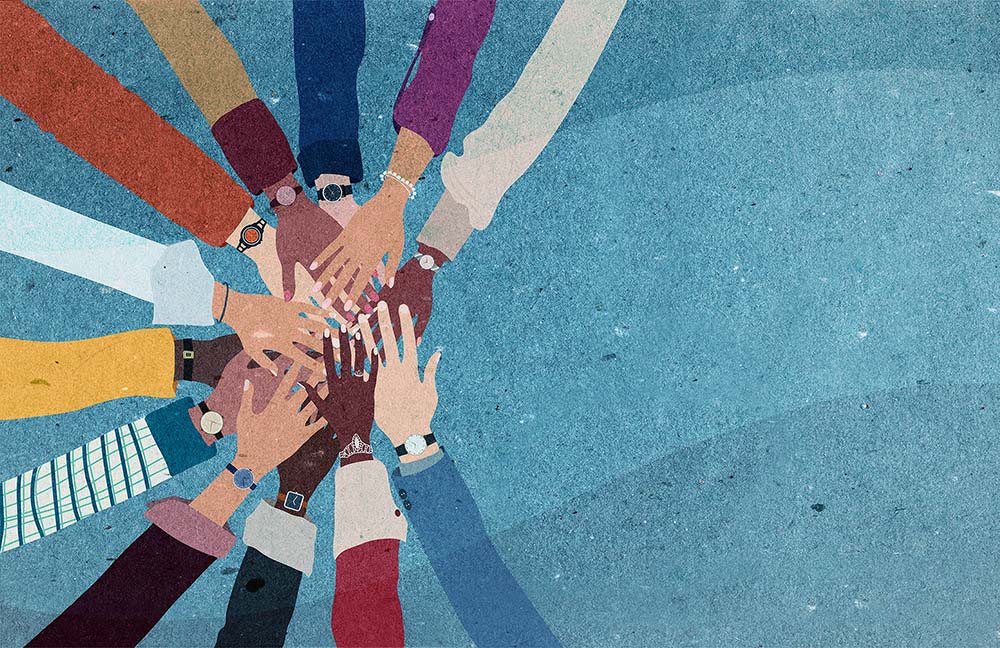Student Notebook: Doing Research With Your Community, for Your Community

Scientific findings can be difficult to apply to real-life scenarios. But one way of addressing real-world applicability is by conducting research and intervention in a community setting, which can ensure your science has a social impact. Researchers and practitioners can use the findings to employ effective interventions in the targeted community. Working with a community entails cultivating and maintaining relationships with stakeholders as well as inquiring about ways in which the community needs support. It means collaboration and active listening to provide well-rounded, scientifically informed interventions and resources.
A prime example of this type of work is an overdose-prevention program I led called ACT 2 Save a Life. The program was designed for college students, particularly athletes and fraternity/sorority life (FSL) members. I hosted conversations with the target community group about substance use and associated harms, which helped my collaborators and I assess the skills and resources that the community needed. Through initiating these conversations, we as researchers and subject-matter experts were able to consolidate a list of resources needed for the community, such as access to intervention trainings and education on rights. We were surprised to hear how many students did not know about 911 Good Samaritan laws or medical amnesty, so we decided this should be included as information provided in our intervention.
Use of focus groups
When selecting a specific research topic, consideration should be placed on the community’s social systems, supports, and other features. Conducting focus groups in the community can help identify cultural features and confounding variables. For instance, we made sure to explain to community members that we weren’t just conducting a research project but were aiming to help them reduce substance-use harm in their community. Through a focus group on overdose intervention with undergraduate students, we learned that students were not allowed Narcan (an over-the-counter nasal spray used to reverse opioid overdose) in dorms, which impeded our ability to measure the effectiveness of our intervention. And without those conversations, we would not have known the availability of social resources (i.e., Narcan on campus, substance-free activity groups, etc.). This demonstrates the importance of including the target population in the scholastic conversation.
Finding community stakeholders and partnerships
When doing community work, one of my first steps is to survey existing resources in the community and identify and talk with leaders of those organizations (e.g., at the county level, at the school, and in the general community). This helps identify community needs and members motivated to support a cause aimed at reducing substance use-related harms. In my case, I also asked subject-matter experts about any community connections they had. Through this process, I was able to make my own connections to survey the level of support and commitment I could receive for ACT 2 Save a Life in my local community. Part of this process also included considerations of diversity and representation in the community—such as hosting stakeholders who were in government and educational positions, along with community organizations such as FSL, athletics, and campus dorms. For our focus groups, we secured good representation of the people in the target community by advertising our intervention as an inclusive community effort. Doing so made community members feel heard and understood because we actively sought out feedback from both stakeholders and community members, involving them in the development and/or implementation of our program.
Maintaining relationships
It is crucial to maintain these relationships with the community and the leadership members because this enables the researcher to stay informed on the effectiveness of the intervention and to be aware of other potential community needs. For example, I checked in with one of the stakeholders for ACT 2 Save a Life and learned that students enjoyed the intervention curriculum but had a hard time gaining access to Narcan. Through this check in, I was able to keep the intervention running while also becoming aware of the need to provide access to Narcan. By showing my dedication to the program, I have been able to keep community members and stakeholders motivated to keep the program running. In fact, I still check in with the community stakeholders who now administer the ACT 2 Save a Life curriculum, and each time they voice appreciation and motivation to maintain the program. Doing regular check-ins, more than those that are required by a grant, is so crucial to community-based work. In maintaining the initial stakeholder relationships, I’ve made has also helped me form new ones and thus spread the word about ACT 2 Save a Life. This helped institutionalize our intervention and make it available to other communities outside of our initial community.
Disseminating research findings
Another beneficial aspect of conducting research within a community is the ease of disseminating findings. Community leaders were able to guide me to places where I could publish findings or present results to both scientific and community groups. Resources that are both accessible to the community and scholastic can include publishing a one-page report or a synopsis. Furthermore, researchers can present their findings at community meetings as well as scientific conferences. Utilizing both scientific/academic forms of dissemination and community forums increases communication skills and the publicity of a researcher’s work. Publishing in both places may also aid in breaking translational issues and barriers to scholastic information, which ultimately can increase accessibility. For example, I presented my findings at a national research conference for academics, but I was also interviewed on the local news about the success of the intervention program—thus increasing both academic knowledge of my work and community awareness of the ACT 2 Save a Life program.
Student Notebook serves as a forum in which APS Student Caucus members communicate their ideas, suggestions, and experiences. Read other Student Notebook columns here, and learn about the benefits of Student Membership.
Interested in submitting a Student Notebook article of your own? Learn more and indicate your interest by clicking here (logged-in APS members only).
Feedback on this article? Email [email protected] or login to comment.






APS regularly opens certain online articles for discussion on our website. Effective February 2021, you must be a logged-in APS member to post comments. By posting a comment, you agree to our Community Guidelines and the display of your profile information, including your name and affiliation. Any opinions, findings, conclusions, or recommendations present in article comments are those of the writers and do not necessarily reflect the views of APS or the article’s author. For more information, please see our Community Guidelines.
Please login with your APS account to comment.